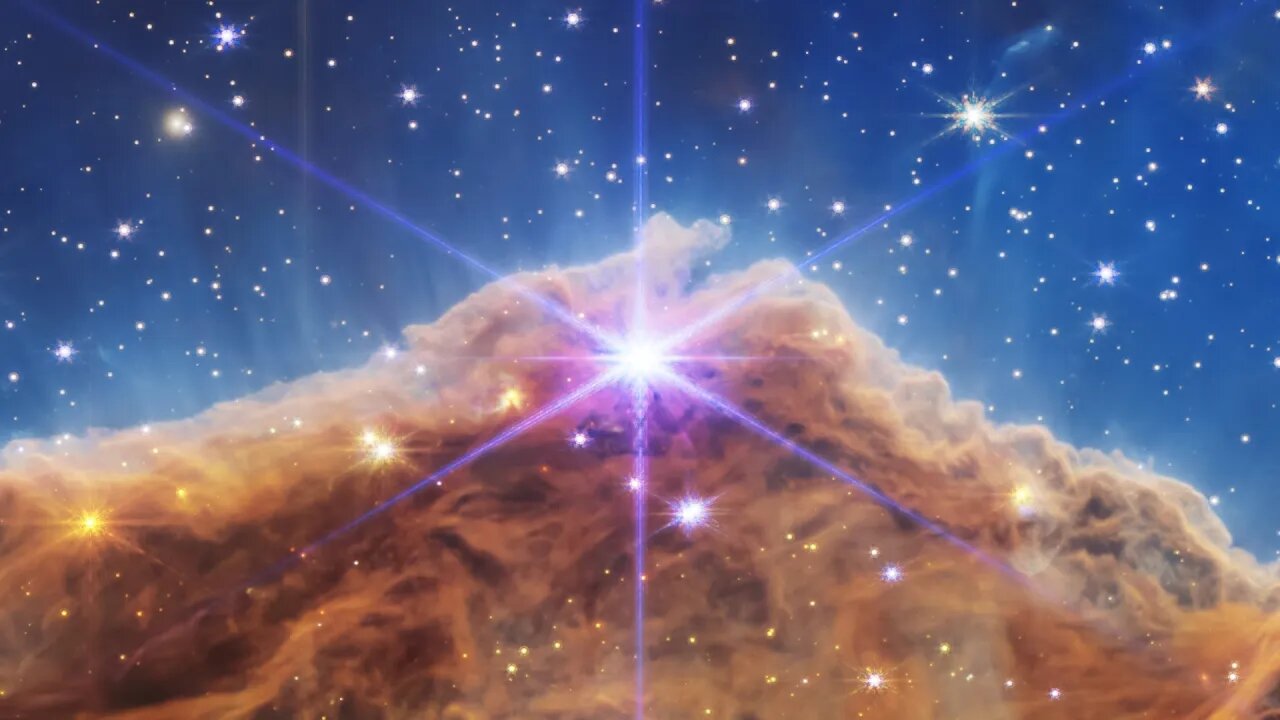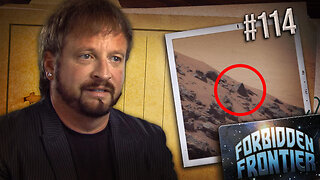Premium Only Content

Som ET - 23 - Stars - James Webb - Carina Nebula (NIRCam Image)
What looks much like craggy mountains on a moonlit evening is actually the edge of a nearby, young, star-forming region NGC 3324 in the Carina Nebula. Captured in infrared light by the Near-Infrared Camera (NIRCam) on NASA’s James Webb Space Telescope, this image reveals previously obscured areas of star birth.
Called the Cosmic Cliffs, the region is actually the edge of a gigantic, gaseous cavity within NGC 3324, roughly 7,600 light-years away. The cavernous area has been carved from the nebula by the intense ultraviolet radiation and stellar winds from extremely massive, hot, young stars located in the center of the bubble, above the area shown in this image. The high-energy radiation from these stars is sculpting the nebula’s wall by slowly eroding it away.
NIRCam – with its crisp resolution and unparalleled sensitivity – unveils hundreds of previously hidden stars, and even numerous background galaxies. Several prominent features in this image are described below.
-- The “steam” that appears to rise from the celestial “mountains” is actually hot, ionized gas and hot dust streaming away from the nebula due to intense, ultraviolet radiation.
-- Dramatic pillars rise above the glowing wall of gas, resisting the blistering ultraviolet radiation from the young stars.
-- Bubbles and cavities are being blown by the intense radiation and stellar winds of newborn stars.
-- Protostellar jets and outflows, which appear in gold, shoot from dust-enshrouded, nascent stars.
-- A “blow-out” erupts at the top-center of the ridge, spewing gas and dust into the interstellar medium.
-- An unusual “arch” appears, looking like a bent-over cylinder.
This period of very early star formation is difficult to capture because, for an individual star, it lasts only about 50,000 to 100,000 years – but Webb’s extreme sensitivity and exquisite spatial resolution have chronicled this rare event.
Located roughly 7,600 light-years away, NGC 3324 was first catalogued by James Dunlop in 1826. Visible from the Southern Hemisphere, it is located at the northwest corner of the Carina Nebula (NGC 3372), which resides in the constellation Carina. The Carina Nebula is home to the Keyhole Nebula and the active, unstable supergiant star called Eta Carinae.
NASA Image: https://stsci-opo.org/STScI-01G7WCK1PJEM49E118GEG0Q729.png
Audio: Som ET - 23 - Stars
Credit: NASA, ESA, CSA, STScI
#NASA #jameswebb #Hubble #ESA #space #science #astronomy #universe #telescope #cosmos #galaxy #nebula #stars
-
 LIVE
LIVE
Rallied
11 minutes agoSolo Challenges All Day
21 watching -
 LIVE
LIVE
Nerdrotic
1 hour agoThe Mysteries of Mars and the Moon with Mike Bara | Forbidden Frontier #114
360 watching -
 LIVE
LIVE
Barry Cunningham
4 hours agoPRESIDENT TRUMP IS THE TROLLER-IN-CHIEF AND MORE BREAKING NEWS!
1,388 watching -
 13:07
13:07
Robbi On The Record
2 hours agoSweet Poison: The Big Fat Lie That’s Killing America
6645 -
 1:00:09
1:00:09
Sarah Westall
1 hour agoFlorida Surgeon General: Operation Warp Speed plus Attacks on RFK Jr w/ Dr Ladapo
4.41K6 -
 11:52
11:52
Tundra Tactical
6 hours agoWhy the SIG P320 Is the King of Gun Memes 💥😂
3.32K -
 1:39:35
1:39:35
Kevin Trudeau
7 hours agoKevin Trudeau: The Complete Creation Algorithm to Manifest Your Goals & Desires
1.93K4 -
 1:11:14
1:11:14
Ohio State Football and Recruiting at Buckeye Huddle
3 hours agoOhio State Football: Instant Reaction from the 14-7 win over Texas
2.29K1 -
 18:01
18:01
Tactical Advisor
1 hour agoNew Miniature AR15 / New Guns | Vault Room Live Stream 037
8.25K2 -
 2:02:10
2:02:10
Akademiks
4 hours agoWar in RAT-LANTA. Young Thug vs Gunna vs Ralo vs YSL MONDO. Who Will Le Bebe Pick. FINAL CRASHOUT!
35.4K7